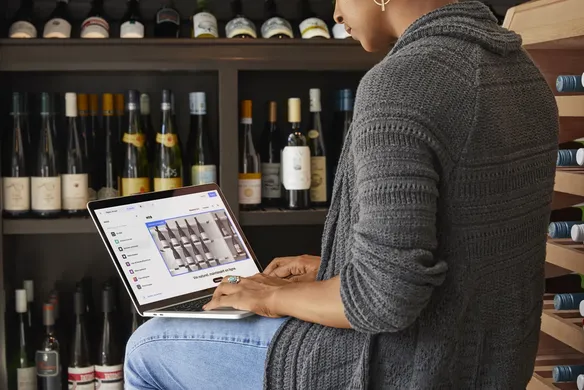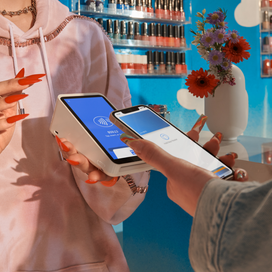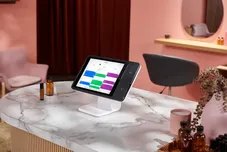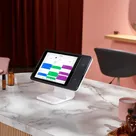Table of contents
You may have heard of the omnichannel customer experience or even omnichannel marketing. But what does it mean for your business?
What is an omnichannel customer experience?
An omnichannel customer experience involves giving your customers several touchpoints for interacting with your brand. The key is that all of these touchpoints should be connected in some way. That doesn’t mean all of the interactions are linear, in that a customer follows a particular path along their journey. Rather, it means they should always have plenty of options for how they connect.
To create an omnichannel experience, you need to have all of your available touchpoints readily available. This makes it easy for customers to go from a potential lead to a converted sale. Many people think an omnichannel experience only applies to online retail businesses, but that’s not true.
An omnichannel experience example
Let’s use the example of a restaurant. They advertise a special deal on Facebook. Customers click on the ad, and they get taken to an online ordering system. The customer chooses their food, collection/delivery options, but let’s say they have a special food request. The restaurant’s online ordering system has a Live Chat function, where the customer can ask about dietary requirements. With the order finalised, the customer makes payment online and waits for their food delivery.
This omnichannel experience took the customer from marketing (seeing the Facebook ad) through to a completed sale, and they didn’t even need to get off the couch. However, they could have visited the restaurant to collect their order if that was convenient. When the transaction is completed, the restaurant may send an automated email to that customer, providing a link to a Google review, or asking for feedback on the service.
This business has managed the entire customer journey, even into post-sale, and created multiple touchpoints along the way.
Multichannel vs omnichannel experience
Multichannel experiences are also great, however, they fall a bit short of a fully omnichannel experience. Unlike omnichannel, a multichannel experience isn’t always well-connected. For example, a customer can find you on multiple social media platforms, but there are no direct links to your website. Instantly, you’ve made it hard for that customer to deal with you. You have a website, of course, with great online ordering systems and live chat functions, but the connectivity between channels isn’t there.
In an omnichannel system, everything is linked so that a customer can move seamlessly through their journey without much effort on their part.
Benefits of an omnichannel experience for businesses
Here are just some of the reasons you should consider growing your omnichannel experience.
1. Better customer experience
It sounds obvious, but when customers can get all of the information they need through a range of contact options, or even better, go straight from seeing an ad to making a purchase, they have a better experience. It’s easy, smooth and they don’t need to go looking for anything extra. Remember, people are time-poor and increasingly want everything available easily. Omnichannel customer experiences cater to modern needs.
2. More conversions
If all of your customer touchpoints are seamlessly linked, you’ll convert more leads into sales. We mentioned before an example where a business’s social media accounts weren’t linked to their website. So, a customer (lead) may see a Facebook ad and click on it, but the link just goes to the company’s Facebook page. They then have to search for the website online.
The fact is, that company would lose half of their leads right there because customers don’t want to chase them. When you make it easy for customers, you’re more likely to convert.
3. Increased brand loyalty
Another great reason to create a great omnichannel customer journey is to build loyalty. You can choose software such as Square Loyalty to compliment your strategy, making it easy to build a loyalty program for your customers. Essentially, when customers can interact with your business through various platforms, they become more connected. Most of all, a great customer experience usually leads to an increase in customer loyalty.
This is important because loyal customers are the ones who are likely to return and give you repeat business. This leads to sales that you’ve created without any additional marketing costs. But perhaps best of all, loyal customers are likely to tell their friends or share their experiences online, which is more free marketing in itself.
How to create an outstanding omnichannel experience
Here are some things to consider when planning your omnichannel customer experience.
1. Know your audience
Firstly, you need to know your audience and how they like to connect with brands. Naturally, it’s good to provide all options, but you should definitely lean towards your audience’s preferred method. If you sell primarily to millennials, make sure your digital touchpoints are simple and easy. If your market is older, you may want to focus more on in-store or phone touchpoints.
2. Understand all variations of the customer journey
As we mentioned before, an omnichannel customer experience isn’t always linear. A customer may go from Facebook to your website, but then want to switch back to Facebook to check customer feedback. Or before they order, they may want to call to discuss certain aspects of their order. So, think of it as a flowchart when you map out the customer journey and understand which direction your customers may want to go at any given time. This is the best way to cover all your bases.
3. Invest in technology
To create a true omnichannel experience, you’ll need to be backed up with the right technology. By combining your online and in-person services to create an omnichannel journey, you’ll need a combination of software and hardware comprising everything from a website or social media account through to POS terminals in-store.
Let’s think of our restaurant example from earlier. They advertise a 2-for-1 deal online. A customer sees the Facebook ad and clicks through to the details of the deal on a website. Already, the restaurant needs a Facebook account and a website with online ordering options, such as a Square Online store. The customer places their order and selects from delivery, curbside pick-up or instore collection. The restaurant then needs a sophisticated POS system such as Square Point of Sale, allowing them to accept online payments. The customer pays, and the food is prepared.
Remember, the restaurant had a live chat function too, which is also technology. Then, the customer feedback survey/review link is an auto-generated email, so they probably use a customer relationship management (CRM) system to make that happen.
Technology is crucial, especially in today’s digital age where customers need multiple options.
4. Ask for feedback – and listen
We mentioned the feedback email in the previous example, and this is a great way to improve our customer experience. Customer feedback can let you know what they loved about the experience, and what could work better. It’s a great way to identify areas of improvement. For example, did the customer get to the online checkout stage and find you didn’t have their preferred payment option? Can this be improved easily? The more customer feedback you get, the better omnichannel customer experience you can create.
Examples of companies with great omnichannel journeys
There are plenty of companies around the world that are leading the way with omnichannel customer experiences. Let’s look at a couple of examples in the eCommerce and retail world. If you want to take your omnichannel strategy to the next level, these businesses can certainly provide some inspiration.
1. Starbucks
Starbucks has taken the humble coffee card and turned it into a terrific omnichannel experience. As a loyalty program, the Starbucks system is pretty simple. A free coffee when you join, as well as impressive ongoing offers. The more you spend, the more you’re rewarded. However, by moving the program online, Starbucks added millions of email addresses to their marketing database.
Users can manage their account on a website, through the app or in-store, making it easy for customers. Ultimately, the customer benefits from great deals, but Starbucks benefits by having an omnichannel presence in their customers’ lives. Thanks to one simple loyalty program, they can now reach customers through multiple channels, further encouraging repeat business and brand loyalty.
2. Woolworths
Online shopping has become huge, and particularly since the Covid-19 pandemic hit. Therefore, it has become ultra-important for retailers like Woolworths who sell essential grocery items. Woolworths has several touchpoints for a customer to interact with them and get the groceries they need. For example, there are several shopping options
- In-store
- Online
- Click and Collect
- Delivery
But the real omnichannel customer experience comes from the way these things tie together. For example, a customer may get an email from Woolworths, advising some of their favourite items are on special. The customer clicks a link in the email which takes them directly to the online store or app. From there, the customer chooses click and collect or delivery. Alternatively, they can head to their local store and buy what they need in person.
![]()











